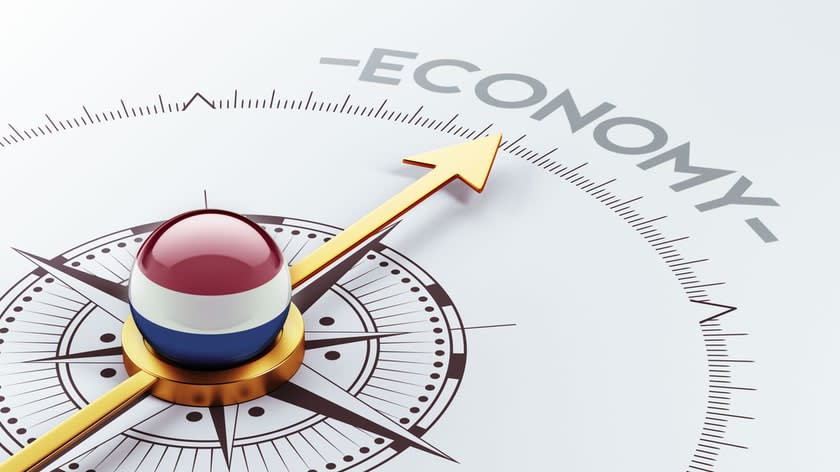The Netherlands - Russian invasion lowers growth outlook

The Russian invasion of Ukraine has changed the growth outlook; with the biggest hit to growth likely in 2023 (we downgrade our forecast from 1.9% to 1.3%). The tight labor market and buoyant savings dampen the negative effects of inflation on consumption. The full impact of higher energy prices on purchasing power will be visible in the second half of 2022.
Co-Author: Nora Neuteboom
The Russian invasion of Ukraine has significantly impacted the growth outlook for the Dutch economy, necessitating a forecast downgrade. As things stand, we expect the economy to expand by 3.1% in 2022. While we revised our quarterly growth forecasts for 2022 downwards, the second estimate of Q4 21 GDP released last Friday showed an upward adjustment compared to the first estimate. The positive spillover effect of this into 2022 has offset the effect of our lower quarterly projections and therefore our GDP growth for 2022 stays unchanged. The main downward revision to growth is in 2023, for which we have lowered our forecast from 1.9% to 1.3%.
In February, the HICP for the Netherlands stood at 7.3% yoy, 1.4pp higher than the eurozone average of 5.9% yoy. Energy is the main driver, with roughly half the price rise caused by rising gas and electricity prices. Higher energy costs and pandemic-related supply bottlenecks also have knock-on effects on core inflation (Dutch core HICP was 2.7% in February). HICP will likely average 5.5% in 2022 and 2.4% in 2023. This is mainly because the war puts additional pressure on supply chains and energy and food costs.

Consumer spending will be mostly hit in the second half of 2022
The relatively bright labor market prospects for consumers and the build-up of additional savings during the lockdown period, would appear to bode well for private consumption. However, consumer sentiment and especially the forward-looking components declined from -30 in February to -39 in March, the lowest since March 2013, most likely because of the high headline inflation figures. Indeed, the biggest drag to consumer spending in our new forecasts comes from inflation. But timing is a critical factor here: around 60% of the Dutch household have fixed energy contracts (between 1 and 5 years).
While the Dutch CPI estimates that energy prices have risen around 90% y/y in February – based on the assumption that every household renews their energy contract every single month – our own transaction data show that the average Dutch household currently pays only around 20% more for their energy bill than this time last year (see graph above). This gap can be explained by the fact that most households have fixed contracts, and even those that have variable contracts only face price rises twice a year. Also, we note that higher energy prices feed slowly into higher food and manufacturing prices for consumers, and therefore the effects of inflation on purchasing power will come fully into force from mid-2022 onwards.
